Twin-Turbo 5.0L Coyote Engine – Engine Builder Magazine
When we heard that Brett LaSala and his twin-turbo 5.0L Coyote-powered 2012 Mustang nicknamed Snot Rocket would be at Sick Week 2023, we were pumped about getting the chance to see the car drag and drive, and possibly get some time to speak with Brett himself.
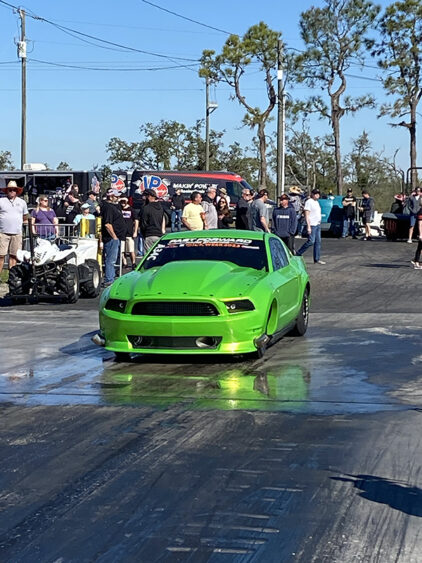
It didn’t take long to get that opportunity as day one of Sick Week showcased the A group cars first at Orlando Speed World. Brett was among the first 20-30 cars on the track and he made his Sick Week debut and first pass a special one by setting a new PR of 6.52 at 212 mph. That ET also happened to be the fastest drag radial pass in all of drag-and-drive history.
It comes as no surprise, but this pass was what they call in drag-and-drive competition a “one and done,” meaning Brett would turn in that time slip and could now focus on heading to the next day’s track. Fortunately for us, Brett wasn’t in a hurry to leave Orlando that morning, so we got a chance to ask him about the details of Snot Rocket and the Mustang’s twin-turbo 5.0L Coyote engine built by Fast Forward Race Engines.
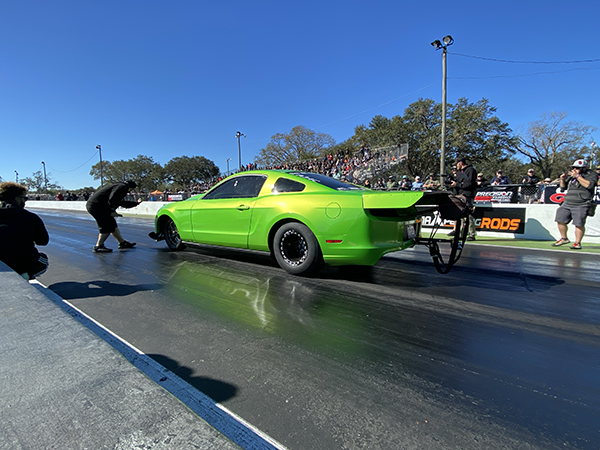
Brett LaSala is the shop lead at Real Street Performance in Sanford, FL, and they have an engine program through Fast Forward Race Engines located in New Port Richey, FL. Brett and engine buildr Joe Irwin have been working together on Ford Coyote stuff for four or five years.
“I’ve basically been his Guinea pig for a long time and he supports me racing,” LaSala says. “If I break something, he builds me a new one, and when we don’t break it and we’re doing great, we’re looking for the next way to improve it.”
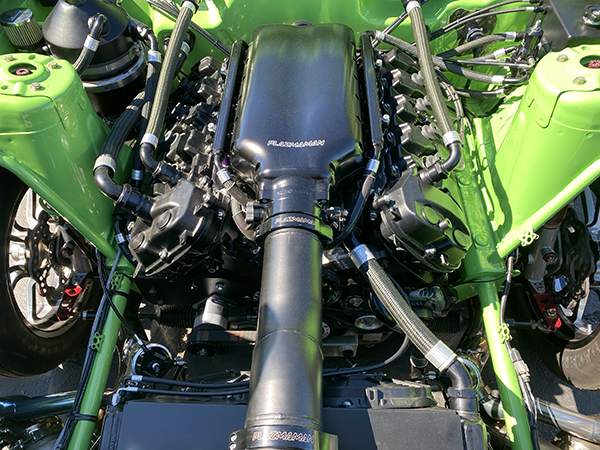
The current engine in Brett’s car is a Predator factory block right from Ford. It has custom sleeves and Joe’s sleeving process done to the block. It has Manley pistons, MGP aluminum connecting rods, a factory Ford crankshaft and race bearings.
“The cylinder heads are production GT350 Voodoo cylinder heads,” LaSala told us. “Joe and the guys have done their port job on those. We also have Ferrea valves and matching springs for the custom COMP Cams camshafts. The lifters, followers and the timing chains are all factory for the Voodoo. We’ve got upgraded secondary chains and some guide work and stuff like that. We also have a Plazmaman intake and intercooler. The intake just keeps making power and the cylinder distribution is nice and good, so we keep pushing it.
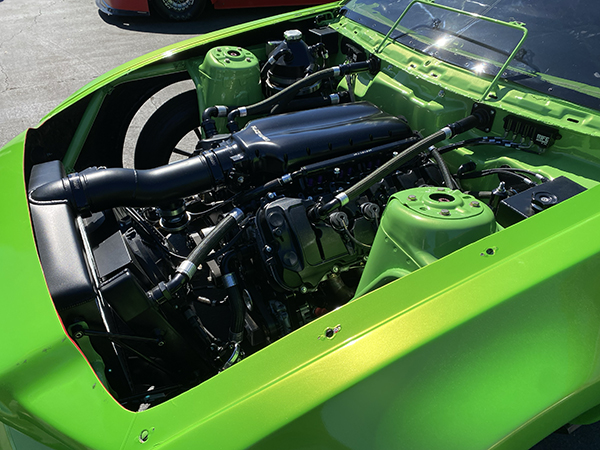
“The engine runs on a dry sump oiling system and a factory cooling system. It’s still a wet deck block and it’s got a copper head gasket with an o-ring and receiver groove. But it’s still a full wet deck, so that’s what allows us to be able to do this drag-and-drive stuff. You can literally just take this engine out and put it in any late-model Mustang and go drive down the road. There’s nothing super race orientated or top secret in it. It’s basic in the sense of an engine making 2,500 horsepower at 9,500 rpm at 302 cubic inches.”
Helping the engine make that kind of horsepower are twin 76mm Precision turbos that sit low at the front of the car.
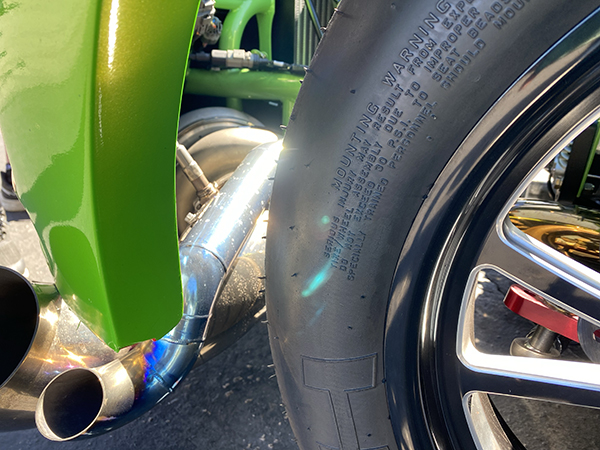
“We’ve got them down low for weight placement of the car and good air,” he says. “They’re Precision 76mm Next Gen R turbos. We run them at about 48-lbs. of boost at their current power level and they’re awesome. We’re just now achieving 1:1 back pressure on this turbo kit. They’ll keep making power to 60-lbs. We just don’t know when the engine is not going to hang in there anymore, so we just up it a little bit at a time. If we make it through this week and we’re doing as good as we are, then maybe we’ll turn it up. We also use Turbosmart wastegates and blowoff valves to control everything.”
According to Brett, this engine has been in the car since about October of 2022 and had less than 50 passes on it at this power level, and it’s been holding strong.
“That 6.52 at 212 mph was actually a personal best for me in this car,” he says. “In Maryland, it went 6.55 at 208 mph. The exciting part is we’re all data nerds, so we downloaded the data and the 60-foot was slower, the eighth mile was slower, but the car is running harder due to some tuning, so it’s there. If we speed the rest up, maybe it’ll go 6.40 this week?”
Brett’s Mustang also features TBM brakes, Rife sensors and MoTeC engine management. Additionally, helping the Coyote engine put power to the ground is an M&M 3-speed transmission with a lockup.
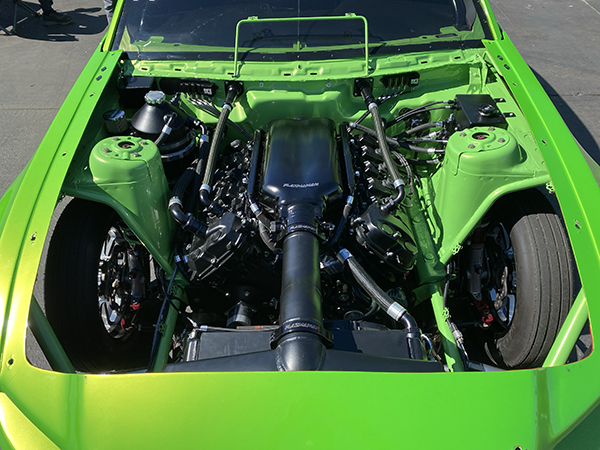
“I’ve been racing this trans for over a year now, so it hasn’t been apart,” LaSala says. “Hopefully it stays up through the week, but I’m sure it will. We also have a Ford 9” in the rear. The car also features a 25.2 roll cage, double frame rail inside.”
With a personal best ET right out of the gate, it’s no surprise that Brett and his team weren’t very worried about the drag racing during Sick Week. However, the long drives between tracks had them more concerned. In fact, it’s a tougher aspect of these competition than most would think.
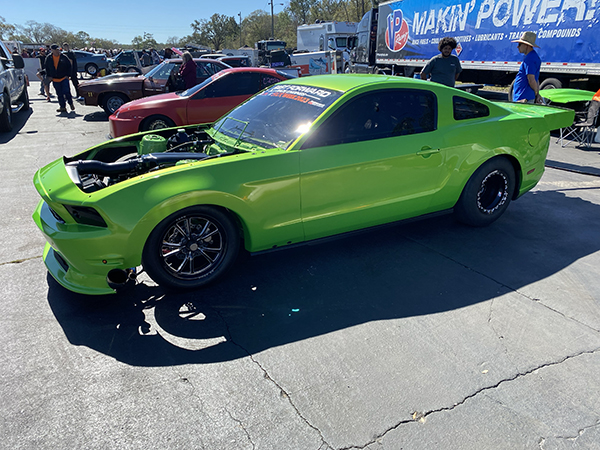
“Obviously, it was a great first run setting the fastest in the class and a personal best,” he says. “But, the drag racing is easy since we do that all the time. The drag and drive five days in a row is where the challenge starts. We did Drag Week 2019 in my old car, which is more of a street car. It wasn’t nearly as race car as this is. When you’re driving, you have thermal management of all your systems. You have road conditions. You have extended periods of vibrations and things like that, so obviously on a drag car you’re building stuff to be light, so it’s not necessarily the most durable. We’ve gone through everything that we can go through with this car, and we believe it’s going to be okay, otherwise we wouldn’t have attempted it.”
Another aspect of Snot Rocket that usually catches folks off guard is the car’s weight. It looks 2,200-lbs., but Brett says it actually weighs 3,000-lbs. with him in it.
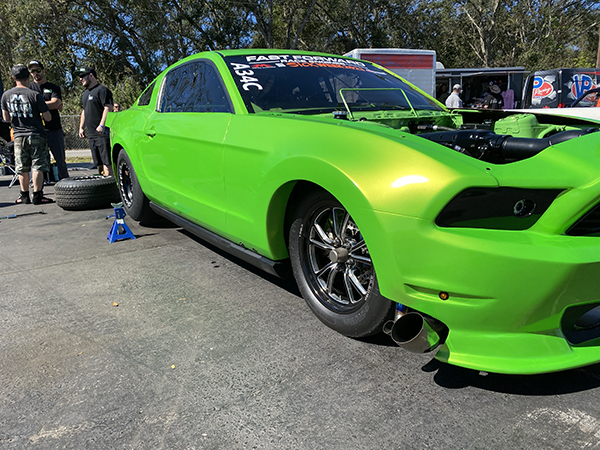
“The weight is because of the things we added for the drag-and-drive such as the big radiator, the big fuel cell in the back and a cable drive fuel pump,” he says. “It’s got weight you don’t necessarily need to have on it for racing, but it works so good we just keep rolling with it.”
The combo is working well indeed! The twin-turbo Coyote engine dyno’d at 2,509 horsepower back in December, and it showed up at Sick Week 2023 ready to prove a point. After Brett’s 6.52 in Orlando on day one, he followed it up with a 6.55 at 215 mph at Bradenton, then a 7.03 at 213 mph at South Georgia Motorsports Park, then a 6.92 at 212 mph in Gainesville, and a 6.68 at 212 mph back in Orlando on the last day. Overall, the performance earned Brett a 6.74 average at 213 mph as well as a class win in Modified, third overall for the event and ‘Quickest Ford’ honors.
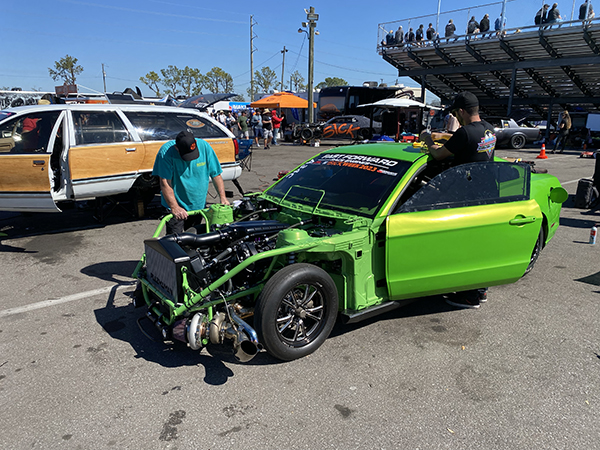
Early in the week, Brett questioned whether the Coyote-powered Mustang could churn out a 6.40 or even a 6.30 pass, but it never materialized, and it never had to in order to remain competitive. Cheers to Brett’s Sick Week performance and his “sick” Coyote engine from Fast Forward Race Engines.
Engine of the Week is sponsored by PennGrade Motor Oil, Elring – Das Original and NPW Companies. If you have an engine you’d like to highlight in this series, please email Engine Builder Editor Greg Jones at [email protected]








